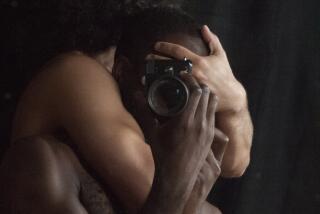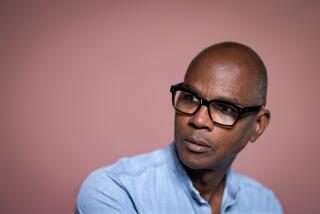‘Hotter’ Review Provokes Two Steamed Reactions : Looking Through, but Not at, Exhibit
- Share via
I am still flabbergasted to read David Pagel’s bizarre, unthinking and thinly veiled racist and phobic review of “Hotter Than July,” a group show at Margo Leavin Gallery composed of work by five artists--not, as he wrote, “five gay black men” (Art Reviews, Aug. 8). I particularly take umbrage at being falsely labeled a “gay black” man. There is nothing in my work that dealt with homosexuality, or heterosexuality for that matter.
Albeit, Pagel as a reviewer is entitled to express his viewpoint, but this in no way entitles him to force opinions that verge between ignorance and insult. Unfortunately, for him, “Hotter Than July,” curated by Steve Henry, shunned the quotidian fare--anger, victimization, wildness, depravity and poverty--that has become almost the official aesthetic standard of so-called “black art” shared by a Camorrist such as Pagel. Denied these typical “black” aesthetic markers, he invented reasons to justify his philippic rant. For instance, he wrote that “the images themselves are tepid, wan and unengaging” or are “well behaved.” In other words, what he called “this conservative exhibition” goes against his quaint, colonial expectation of wildness that would--as he said--”get your blood boiling.” Ah, but, the noble savage is dead!
It wasn’t necessary for Pagel to subject and filter “July” through a hideous racial-sexual “gay black” framework. I doubt if Pagel is in the habit of referring to the usual fare of all-Caucasian group/solo shows as “white.”
Now, consider “Hotter Than July” in its opposite value: “five gay white men.” As a matter of fact, among the three shows he reviewed that day, he scapegoated only “Hotter Than July” racially and sexually. One wonders what are the races and sexual identities of the men and women in “Weegee” and “Be Specific.”
Pagel’s approach was not only myopic and insulting, but preempted any reasonable criticism, and in effect allowed him room to look through, rather than at, the exhibition. Ultimately, his dilettantish review shortchanges Times readers who turn to it for learned reporting.
By including and labeling me as one of his “five gay black men” he effectively falsified my sexual identity. And had he not brought his narrow focus to bear, he may have looked differently at my photo of a woman named Shaway. She is my girlfriend.
Editor’s Note: The Times regrets the mistaken reference to Mr. Ude’s sexual identity.
More to Read
The biggest entertainment stories
Get our big stories about Hollywood, film, television, music, arts, culture and more right in your inbox as soon as they publish.
You may occasionally receive promotional content from the Los Angeles Times.










